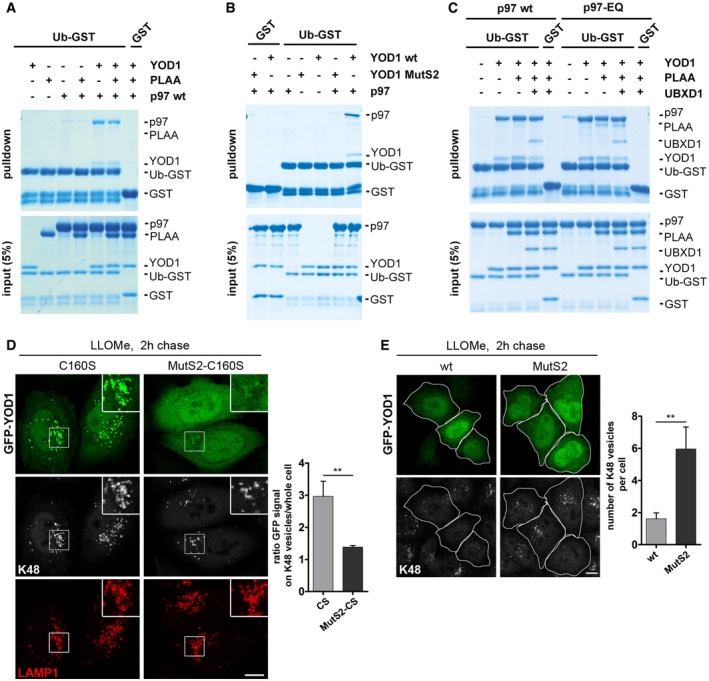YOD1 can link p97 to ubiquitin. Ubiquitin‐GST (Ub‐GST) or GST alone was incubated with the indicated purified proteins and isolated. Co‐isolated proteins (pulldown) were detected in SDS gels. Note binding of p97 and YOD1 to Ub‐GST only in combination.
The S2 site of YOD1 is critical for ubiquitin binding. Experiments as in (A) with indicated combinations of p97 and YOD1‐wt or the ubiquitin‐binding mutant, MutS2.
Reconstitution of a complex of ELDR components on ubiquitin. Experiments as in (A) with combinations of p97‐wt or p97‐EQ, YOD1, PLAA, and UBXD1 as indicated. Note that PLAA associates with p97 and YOD1 on ubiquitin only in the case of p97‐EQ.
Translocation of YOD1 to lysosomes depends on ubiquitin binding by the S2 site. LLOMe‐treated cells expressing GFP‐YOD1‐CS or the double mutant GFP‐YOD1‐CS‐MutS2 were chased for 2 h and stained for K48 chains and LAMP1. Ratio of GFP signal on K48 vesicles to GFP signal in the whole cell was determined.
The S2 site is essential for K48 conjugate removal. GFP‐YOD1‐wt‐ or GFP‐YOD1‐MutS2‐overexpressing cells treated as in (D) were stained for K48 chains. Quantification of the number of K48‐positive vesicles per cell.
Data information: Data represent mean ± SD of three independent experiments. **
P < 0.01 (Student's unpaired
t‐test). Scale bars, 10 μm.

